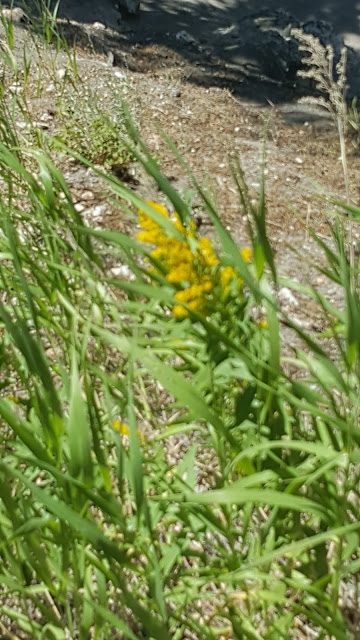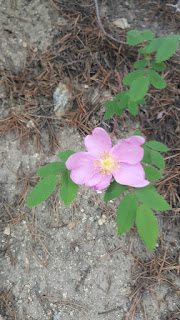A sunny show of day twos coditions
Day two at the Canyons was much better. Me and my roommates went around 11 am and this time around the road conditions were great. Near perfect roads took us only around 90 minutes total to go to and from Provo. Milosport Snowboard Shop charged only $17 dollars for a ski wax and only took around 15 minutes which I found to be a pretty good deal and good service. Mind you this was for a pair of skis and two snowboards. Snowboard and boot rentals are also available at UVU for students for only 20 dollars a day from the outdoor adventure center where I also got a free hat and pair of sunglasses.
Mountain conditions were good on the 30th. Machine made snow that was well groomed, light 5 mph winds, and sunshine made for some great skiing! Very few people seem to ski Canyons on weekdays. The same run, Kokopeli was open, but we were able to ski until 4pm because of the short lines and little wind. We were able to get about 15 runs in total. Canyons skiing is comparable to skiing Copper Mountain and Beaver Creek in Colorado. Annual snowfall at the canyons is 380 inches, which is comparable to the 250 inches expected at Beaver Creek. However Canyons gets some 30 less days of snow on average, meaning more high powder dumps than Colorado's more regular dustings.
With good conditions and few people the canyons can make an amazing trip even with just one run!
Thursday, December 8, 2016
Canyons skiing the day after opening
Link to video of the conditions
After a week long delay, Park City opened its slopes to skiers and snowboarders alike on November 27th. I eagerly hit the hills on the 28th after an evening of snow. The road conditions were bad on the drive up from Provo, lagging at speeds of only 45 mph in the canyons leading up to the resort. I was shocked to see that almost no one was on the roads or at the canyons when we arrived. Though open, there was only one run open, Kokopeli, a blue with a small amount of trees and a few good sized jumps toward the bottom. At 19'' the snow conditions were less than ideal but astoundingly good for early season skiing. I was especially attentive to staff and lift services as this was my very first time skiing in Utah. Everybody was incredibly nice and it felt like being back home in Colorado. The Red Pine Gondola was a treat to ride as it is covered and the winds were reaching 45 mph towards the top of the lift. It was snowing heavily and hard coming in fast from howling winds through the canyons. After skiing for about an hour it was almost no fun because of the piercing wind and low visibility. Unfortunately around 2pm the staff warned that soon the Gondola would be closed down, and because there was only one run open and none servicing the base we would be stuck at the top for an unforeseen time until they could rescue us on snow cats. on this word we headed back down and home. Over all it was an awesome first ski of the season and I am looking forward to more!
After a week long delay, Park City opened its slopes to skiers and snowboarders alike on November 27th. I eagerly hit the hills on the 28th after an evening of snow. The road conditions were bad on the drive up from Provo, lagging at speeds of only 45 mph in the canyons leading up to the resort. I was shocked to see that almost no one was on the roads or at the canyons when we arrived. Though open, there was only one run open, Kokopeli, a blue with a small amount of trees and a few good sized jumps toward the bottom. At 19'' the snow conditions were less than ideal but astoundingly good for early season skiing. I was especially attentive to staff and lift services as this was my very first time skiing in Utah. Everybody was incredibly nice and it felt like being back home in Colorado. The Red Pine Gondola was a treat to ride as it is covered and the winds were reaching 45 mph towards the top of the lift. It was snowing heavily and hard coming in fast from howling winds through the canyons. After skiing for about an hour it was almost no fun because of the piercing wind and low visibility. Unfortunately around 2pm the staff warned that soon the Gondola would be closed down, and because there was only one run open and none servicing the base we would be stuck at the top for an unforeseen time until they could rescue us on snow cats. on this word we headed back down and home. Over all it was an awesome first ski of the season and I am looking forward to more!
Thursday, October 27, 2016
Y Mountain: A Brief History
Brigham Young University's Y Mountain is nothing short of an icon here in the Utah Valley. Due east of the main campus, "the Y", as it is known colloquially by residents of the valley, stands at an elevation of 8,572 ft. and rises 788 ft. above the surrounding valley. It is much larger than it seems, stretching 380 ft. tall and 130 ft. wide. It is made of concrete, and as of recently is lined with LED bulbs around the edges used for lighting it during the evenings of BYU homecoming week during October. The Y Mountain wasn't always called such, and was previously known by early settlers by its Ute name of Wahdahhekawee, which means "blessed mountain". In 1906 a proposition was made to paint the graduating class year, '07, on the mountain by Brigham Young High school juniors, which was contested by the president of Brigham Young University's president George H. Brimhall. To compromise, the suggestion was made that instead BYU would be painted on the mountainside. In April of 1906 the historic construction of the proposed BYU began, as thousands of buckets of whitewash and sand were hauled up the mountain by students and faculty. Many hours of labor passed and only the Y had been completed. The rest of the letters were postponed to be completed on a later date, and were eventually abandoned leaving the large white Y standing alone. From 1907 to 1973 a tradition of "Y day" was carried out in which students would take thousands of gallons of whitewash via bucket brigade to the Y to be repainted, which was discontinued in 1975 when BYU would contract a helicopter to deliver the some 20,000 gallons of whitewash needed to repaint it. In 1911, the bottoms and tops of the Y were altered, giving it the look it bears today. "Lighting the Y" began as a tradition in 1924, where students would carry pieces of oil drenched cloth and soaked mattress pieces and set them alight on the Y. This method produced only about 20 minutes of fire and was discontinued due to wildfire risk in 1985, and instead strings of electric 25 kw bulbs were lined around the Y, powered by diesel generators, allowing the monument to be lit for several nights in a row. in 2014 the Y was outfitted with LED bulbs mounted in the concrete that could be lit remotely, however the tradition of creating a mock bucket brigade still remains, and the lights are lit in sequence to appear as if being lit by torch as they were in the past. In 2013 BYU was allowed to purchase 80 acres of land surrounding the Y in order to control its preservation as usage, however it is still open to tourists and students who wish to climb the 1.3 mile trail to the top as I did this past month!
 |
| Here my ward and I sit on the the top left of the Y. As you can can see it is truly immense. I can only imagine what it would've been like trying to paint it! |
Friday, September 30, 2016
Yellowstone National Park- Waterfalls and Wildflowers Galore! Photos of the acclaimed Porcelain Pools
 |
| Old Faithful Geyser only 5 minutes from eruption |
 |
| Yellow Thrush on the river bank |
 |
| Cascading waters of Yellowstone's Lower Falls |
 |
| Pink Clover |
 |
| Purple Fleabane |
 |
| Colorado's State flower the Columbine (this one's purple) |
 |
| Porcelain Pool "Dead man's pool" Dubbed for its high heat |
 |
| Large Expanse of super heated waters in the Porcelain Basin |
 |
| Trees can be seen growing from these crystal clear Pools |
 |
| Petrified wood lies in the heat of this pool |
 |
| Honey suckle growing off a cliff near Lower Falls |
Monday, September 19, 2016
Incredible fish pond in Boulder, Colorado and Wildflower Pics!
Link to video on my you tube channel:Click here to view the video
Below are some pictures I took on the hike along with species info.
 |
| A mountain daisy, I believe a Fleabane- Edible but tastes gross. Seen growing right next to fish pool out of a rock. |
 |
| Red Elderberry- Poisonous and pretty gross (not fatal) |
Friday, September 9, 2016
Squaw Peak at sunset
This past week I took a quick trip to squaw peak around 6:45 pm to catch the gorgeous sunset and dusk hours on the mountain. A twenty minute hike to the top from the outlook takes you to the summit where you can catch some truly spectacular views.
 |
| 10 minutes to sunset the Utah Valley looks amazing, Utah Lake reflecting the sunlight was spectacular! |
 |
| The southern slopes off of Squaw peak showing their incredible fall colors. |
 |
| BYU and UVU, though small, can be seen in this photo of the southern area of the valley. |
 |
| A purple daisy seen growing on the hard pan slopes of the mountainside. |
 |
| The sun through the orange leaves of a fall oak. |
 |
| Mt, Timpanogos and Big Baldy can be seen from Squaw Peak to the North. Truly Glorious. |
Labels:
hike,
squaw peak,
utah valley
Location:
Utah County, UT, USA
Thursday, September 1, 2016
WIldflowers in the Fraser Experimental Forest
Subscribe to:
Posts (Atom)





